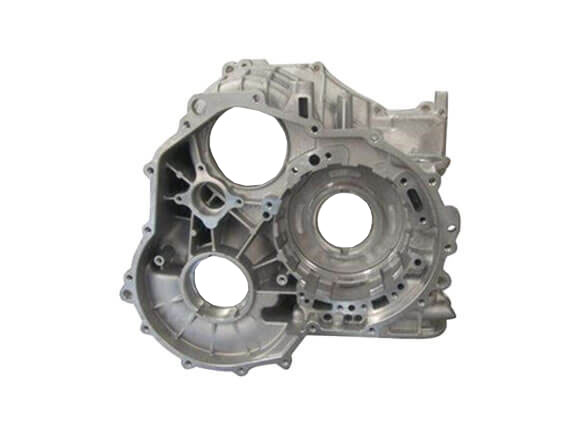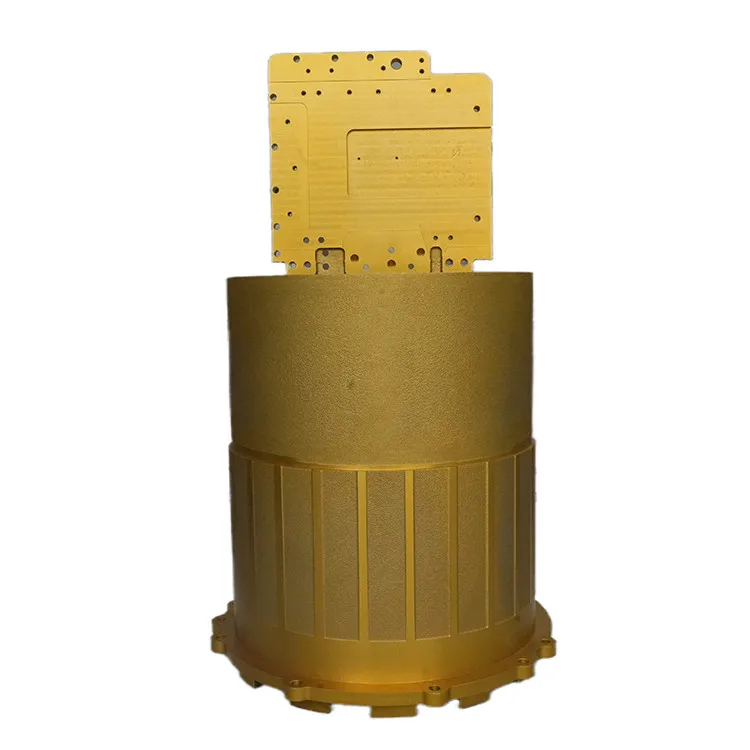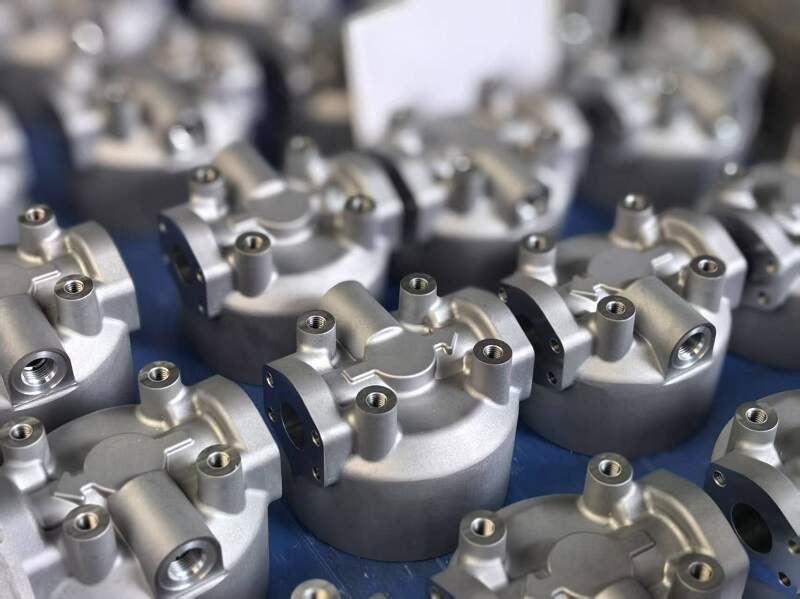How aluminum casting plays a major role in today’s manufacturing industry
Wiki Article
Discovering the Cutting-edge Procedures Behind Modern Aluminum Factory Operations
Modern light weight aluminum shop operations are undergoing substantial makeover. Automation and AI are reshaping production approaches, improving both performance and precision. The integration of 3D printing is simplifying mold production, while sustainability methods are becoming more important. Each of these innovations plays an essential role in redefining the market. Nonetheless, the ramifications of these adjustments prolong beyond mere manufacturing effectiveness. What opportunities and challenges lie in advance for light weight aluminum factories in this evolving landscape?The Function of Automation in Light Weight Aluminum Foundries

Automation adds to boosted safety standards within the shop setting. By moving dangerous tasks to makers, human workers can concentrate on supervisory functions and quality assurance, lessening the danger of crashes. On top of that, data analytics stemmed from automated procedures supply useful understandings into operational efficiency, leading to far better decision-making and constant improvement. As the need for aluminum items grows, the adoption of automation modern technologies will likely broaden, additionally transforming the landscape of aluminum shop procedures.
Improvements in Casting Technologies
Recent improvements in casting modern technologies are transforming aluminum shop operations. Developments such as 3D printing integration, progressed alloy solutions, and automated process optimization are boosting performance and product quality. These advancements are pivotal in satisfying the advancing needs of the sector.3D Printing Combination
Incorporating 3D printing innovation into light weight aluminum foundry operations has revolutionized typical spreading techniques, boosting both efficiency and precision. This cutting-edge technique permits the rapid manufacturing of complex molds and cores, greatly minimizing lead times and product waste. By utilizing additive manufacturing, shops can produce complex geometries that were formerly challenging or impossible to achieve with standard techniques. The flexibility of 3D printing likewise allows fast style modifications, cultivating a more nimble manufacturing procedure. In addition, this assimilation sustains using lightweight structures, which is significantly vital in sectors such as automotive and aerospace. As light weight aluminum shops remain to embrace 3D printing, they place themselves at the center of technical advancement, driving renovations in product top quality and functional capacities.Advanced Alloy Formulations
The development of sophisticated alloy solutions has significantly boosted spreading technologies in aluminum foundry operations. These solutions incorporate numerous components, such as magnesium, silicon, and copper, to improve mechanical buildings and thermal resistance. By tailoring the structure of light weight aluminum alloys, producers can achieve particular performance features that meet the needs of diverse applications, from auto components to aerospace structures. Making use of advanced alloys additionally adds to minimized weight and boosted strength, which are vital elements in contemporary engineering. Additionally, advancements in alloy development make it possible for much better fluidness throughout casting, causing enhanced surface finishes and lowered flaws. Generally, advanced alloy formulations stand for a substantial leap ahead, positioning aluminum factories to satisfy the evolving demands of numerous industries effectively.Automated Process Optimization
Developments in casting technologies have paved the means for computerized procedure improvement in aluminum foundry procedures. By incorporating innovative software program and real-time data analytics, factories can currently simplify manufacturing processes and boost top quality control. Automated systems keep track of variables such as temperature, cooling, and stress prices, enabling for immediate changes that decrease flaws and waste. Additionally, artificial intelligence algorithms assess historic efficiency data to forecast excellent setups, thus increasing effectiveness and reducing cycle times. Robotics likewise play a considerable role, managing repetitive tasks that boost safety and accuracy. Generally, these innovations not only drive operational effectiveness yet also enable factories to meet the expanding need for premium light weight aluminum components in various markets.Smart Production and Sector 4.0 Combination
The assimilation of Smart Manufacturing and Industry 4.0 within aluminum foundries is changing operational performance. By leveraging IoT modern technologies, automation, and robotics, factories can enhance manufacturing procedures and minimize downtime. In addition, data analytics supplies vital understandings that boost decision-making and drive continuous improvement.IoT in Foundry Operations
As makers increasingly welcome the Net of Points (IoT), foundry operations are experiencing a transformative shift in the direction of clever production and Market 4.0 assimilation. Precision aluminum casting. IoT innovations make it possible for real-time data collection and analysis, boosting decision-making procedures and operational efficiency. Sensors and connected devices keep an eye on tools performance, product usage, and ecological problems, permitting aggressive upkeep and source optimization. This connectivity fosters an extra dexterous manufacturing setting, where adjustments can be made swiftly in feedback to market demands. In addition, IoT facilitates enhanced traceability and top quality control, as data from the whole production cycle can be conveniently accessed and assessed. Generally, the integration of IoT in foundry operations considerably enhances performance and drives innovation in light weight aluminum production processesAutomation and Robotics Assimilation
Automation and robotics assimilation is revolutionizing aluminum shop procedures by boosting performance and accuracy. This transformative his comment is here method enhances procedures such as molding, putting, and ending up, decreasing human error and boosting output consistency. By employing sophisticated robot systems, foundries can achieve higher manufacturing rates while preserving rigorous high quality criteria. Automated systems additionally enable real-time surveillance and adaptive control, permitting for speedy changes to production parameters. On top of that, the integration of robotics decreases labor costs and alleviates safety and security threats connected with hands-on handling of molten steel. As factories embrace wise manufacturing concepts fundamental in Industry 4.0, the synergy in between automation and robotics solidifies their one-upmanship, paving the method for sustainable development and advancement in the light weight aluminum spreading sector.Information Analytics for Performance
Using data analytics greatly improves effectiveness within aluminum shop operations, straightening with clever production and Industry 4.0 principles. By leveraging real-time data collection and analysis, foundries can check production procedures, anticipate devices failings, and maximize source appropriation. This data-driven approach helps with insightful decision-making, enabling supervisors to determine bottlenecks and boost operations. In addition, anticipating analytics encourages factories to anticipate market needs, therefore lowering waste and guaranteeing timely product distribution. Assimilation of information analytics with IoT gadgets improves operational visibility, cultivating a positive upkeep culture. Ultimately, implementing these innovative analytical techniques not just increases efficiency yet likewise drives advancement, placing aluminum factories to meet the progressing demands of the industry while keeping one-upmanships in a rapidly transforming landscape.Sustainable Practices in Light Weight Aluminum Casting
While the light weight aluminum spreading sector has typically faced ecological challenges, several factories are currently adopting sustainable practices to minimize their influence (Aluminum Foundry). A substantial focus has been on recycling aluminum scrap, which not only decreases waste yet likewise conserves power compared to key light weight aluminum production. Cutting-edge melting technologies, such as induction furnaces, boost power effectiveness and reduced greenhouse gas dischargesAdditionally, shops are executing closed-loop water systems to decrease water intake and decrease thermal air pollution. Using environmentally friendly binders in mold-making processes is obtaining grip, additional decreasing damaging discharges.
In addition, some centers are spending in renewable power resources to power operations, lining up with international sustainability objectives. By incorporating these practices, the light weight aluminum casting sector is evolving toward a more environmentally liable future, showing that financial development can exist together with environmental stewardship - Precision aluminum casting. These efforts reflect a dedication to sustainability and the value of environmental liability in production
Quality Assurance Innovations
As the aluminum casting market developments in the direction of sustainability, the relevance of quality assurance developments ends up being increasingly obvious. Modern light weight aluminum shops are adopting innovative innovations to improve their high quality assurance processes. Methods visit the site such as real-time monitoring and information analytics permit producers to detect variances and issues early in the manufacturing cycle. Executing automated examination systems furnished with device discovering formulas warranties that products satisfy stringent top quality standards while minimizing human mistake.In addition, the integration of non-destructive testing methods, such as radiographic and ultrasonic inspections, gives deeper insights into the integrity of castings without harming the material. These advancements not just boost item dependability yet also lower waste, lining up with sustainability objectives. In addition, the adoption of standardized quality structures helps improve procedures across different foundries, ensuring consistency in outcome. Jointly, these developments are improving quality control, cultivating a society of excellence within the aluminum spreading field.
Future Fads in Light Weight Aluminum Foundry Operations
What developments exist in advance for aluminum foundry operations? The future of light weight aluminum shops is positioned for improvement via improvements in automation, artificial intelligence, and sustainable practices. The integration of robotics and automated systems is anticipated to boost efficiency and accuracy in the casting processes, minimizing human mistake and labor costs. Furthermore, AI-driven analytics will certainly enable real-time surveillance and anticipating upkeep, maximizing functional performance and minimizing downtime.Sustainability stays a prime focus, with shops significantly embracing environment-friendly techniques, such as making use of recycled light weight aluminum and creating low-emission melting modern technologies. Technologies in 3D printing are additionally expected to change mold-making, enabling for complicated geometries and minimized product waste. As the industry embraces digitalization, data-driven decision-making will certainly end up being pivotal, allowing factories to react promptly to market demands. Collectively, these fads promise to redefine aluminum factory procedures, making them extra effective, lasting, and adaptable to future difficulties.

Often Asked Concerns
What Security Measures Are Executed in Light Weight Aluminum Factory Procedures?
Light click for more info weight aluminum shop procedures execute various precaution, including personal safety tools, air flow systems to take care of fumes, regular safety and security training, emergency situation response strategies, and stringent monitoring of temperature and tools to stop accidents and warranty worker security.Just How Do Factories Manage Workforce Educating for New Technologies?

What Materials Are Generally Recycled in Light Weight Aluminum Foundries?
Light weight aluminum foundries frequently recycle scrap light weight aluminum, including post-consumer products like drink canisters, vehicle components, and building and construction materials. This recycling procedure lowers waste and saves sources, adding to an extra lasting light weight aluminum manufacturing market.Just How Does Aluminum Casting Influence the Setting?
Light weight aluminum casting impacts the environment with energy-intensive procedures, greenhouse gas discharges, and possible neighborhood contamination. Improvements in reusing and sustainable practices can alleviate these effects, advertising a more environment-friendly strategy to aluminum production.What Are the Common Lead Times for Light Weight Aluminum Casting Projects?
Regular lead times for light weight aluminum casting tasks differ considerably, generally ranging from two to 6 weeks. Elements influencing these timelines consist of complexity, order size, and product schedule, impacting overall manufacturing routines in foundry operations.
Automation significantly plays a crucial duty in aluminum factories, boosting efficiency and accuracy in the manufacturing procedure. Developments in casting modern technologies have actually led the means for computerized process improvement in light weight aluminum foundry operations. Using information analytics substantially improves efficiency within aluminum foundry operations, straightening with clever production and Sector 4.0 principles. A significant emphasis has actually been on recycling light weight aluminum scrap, which not just lowers waste but also saves power compared to main light weight aluminum manufacturing. Aluminum foundries typically recycle scrap aluminum, consisting of post-consumer items like beverage canisters, vehicle components, and building materials.
Report this wiki page